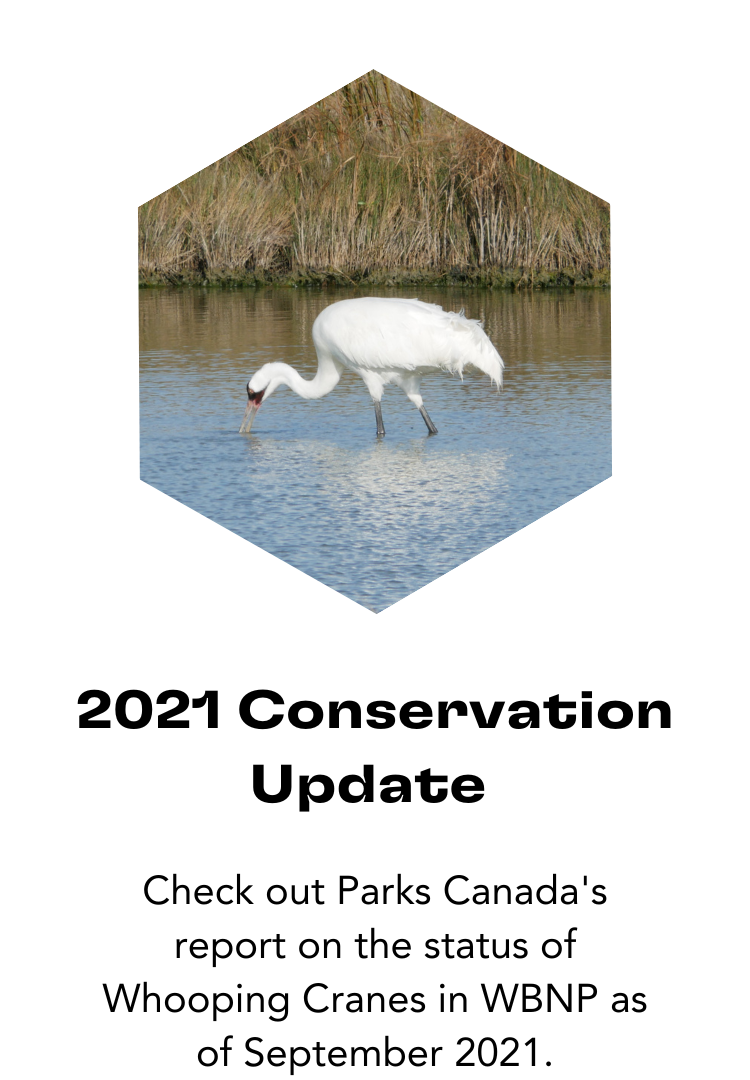
Point Solo

Wood Buffalo National Park is the summer home to the last wild Whooping Crane population. Here we see a solo crane, walking in the wetlands. While Whooping Cranes travel in large flocks, mating pairs split up into their own family groups once the nesting habitat is reached, and will guard their own territories. A Whooping Crane pair usually protects a territory from 3-5 km2 / 1.16 – 1.93 sq mi in size, but territories can reach up to 19km2 / 7.3 sq mi in more isolated nesting areas.
Wood Buffalo National Park is a designated UNESCO World Heritage Site since it provides critical habitat for a diversity of species, including Bison and Whooping Cranes. The park contains some of the largest and most unimpeded Great Plains-Boreal grassland ecosystems left in North America, and is filled with expanses of grass and sedge meadows throughout. Within the park, a network of winding, shallow wetlands is the sole nesting site for the Aransas-Wood Buffalo Whooping Crane population.
Experience an aerial view of Whooping Crane nesting habitats in Wood Buffalo National Park, and see Dr. Bondar’s perspective as she photographs them from the air.
These wetland breeding grounds were discovered by researchers in 1954, and have been monitored ever since. Since the wetlands are remote, they provide a refuge from human disturbance and have played a key role in population recovery. Habitat loss is a key driver of Whooping Crane decline (in addition to hunting), making the value of preserving key areas like Wood Buffalo National Park clear. Increased frequency and intensity of drought and fire conditions currently threaten the viability of the park’s wetland habitats and are a growing concern for Whooping Crane conservation.
Every year, the Government of Canada conducts aerial surveys of Wood Buffalo National Park in May to count the number of nests, and again in July to count the chicks hatched before their migration to Texas begins. Extensive monitoring, bans on hunting, and habitat preservation have all contributed to the resurgence of the Aransas-Wood Buffalo Whooping Crane population into the hundreds. Continued conservation of habitats along the migration corridor is critical to maintaining the stability and growth of the population.
Explore more below to learn about Whooping Crane habitats and conservation!
Sources
- UNESCO: https://whc.unesco.org/en/list/256/#:~:text=Outstanding%20Universal%20Value,-Brief%20synthesis&text=Wood%20Buffalo%20National%20Park%20is,wood%20bison%2C%20a%20threatened%20species
- Government of Canada: https://parks.canada.ca/pn-np/nt/woodbuffalo/nature/science_nature/Cranes_Grue
- Canadian Wildlife Federation: https://www.hww.ca/en/wildlife/birds/whooping-crane.html


